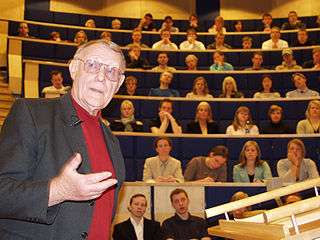| Fjällsätern | |
|---|---|
 View of Tureborg Castle in the early 1900s, atop Fjällsätern's highest point | |
| Highest point | |
| Elevation | 109.5 [1] m (359 ft) |
| Geography | |
| Location | Uddevalla, Västra Götaland County, Sweden |
Fjällsätern is a minor mountain in southern Uddevalla, Sweden. Its summit reaches 105.9 metres (347 ft) above sea level according to one 1950 estimate (an earlier one from 1903 put it at 300 Swedish feet), [2] making it the area's second highest. [1] There the local politician and publicist Ture Malmgren (1851–1922) began building his grand Tureborg Castle, today a ruin, in 1899. Along its slopes Malmgren constructed several other structures, among them the likewise faux-medieval summer residence Fjällhyddan, and his own would-be tomb. [3] The area was once completely barren, but Malmgren – who was engaged in the tree-planting movement of that time – promised his wife Hilma that she would one day be able to walk beneath trees on Fjällsätern, and set about planting the thick forest of today. [4] A nature reserve named after him, Ture Valleys, is situated on the mountain's eastern side.

Uddevalla is a town and the seat of Uddevalla Municipality in Västra Götaland County, Sweden. In 2010, it had a population of 31,212.

Sweden, officially the Kingdom of Sweden, is a Scandinavian Nordic country in Northern Europe. It borders Norway to the west and north and Finland to the east, and is connected to Denmark in the southwest by a bridge-tunnel across the Öresund, a strait at the Swedish-Danish border. At 450,295 square kilometres (173,860 sq mi), Sweden is the largest country in Northern Europe, the third-largest country in the European Union and the fifth largest country in Europe by area. Sweden has a total population of 10.2 million of which 2.4 million has a foreign background. It has a low population density of 22 inhabitants per square kilometre (57/sq mi). The highest concentration is in the southern half of the country.

Ture Robert Ferdinand Malmgren was a Swedish journalist, book publisher, and municipal politician. A prominent figure in his home Uddevalla, Malmgren became a colourful and well-known part of the city's history through, among other things, his long-lasting ownership of the newspaper Bohusläningen, work in the local political scene, eccentric and extravagant lifestyle, and faux-medieval Tureborg Castle.
During the Second World War, Fjällsätern was used by the Swedish Armed Forces for the town's air defence, as a lookout post. When Tureborg Castle burned down in 1950, the height of the mountain made it difficult for the firemen to reach the fire. [3] No historical remains pre-dating Ture Malmgren's use of the area are known on Fjällsätern, but several Stone Age sites sit by its foot, [5] and the "-säter" suffix often indicates the area was historically used for forest-based livestock grazing. [6]
The Swedish Armed Forces is the government agency that forms the military forces of Sweden, and which is tasked with defense of the country, as well as promoting Sweden's wider interests, supporting international peacekeeping efforts, and providing humanitarian aid. It consists of: the Swedish Army, the Swedish Air Force and the Swedish Navy, with addition of a military reserve force, the Home Guard. Since 1994, all the Swedish armed services are organised within a single unified government agency, headed by the Supreme Commander, even though the individual services maintain their distinct identities. King Carl XVI Gustaf of Sweden is traditionally attributed as Honorary General and Admiral à la suite.

The Stone Age was a broad prehistoric period during which stone was widely used to make implements with an edge, a point, or a percussion surface. The period lasted roughly 3.4 million years and ended between 8700 BCE and 2000 BCE with the advent of metalworking.
















